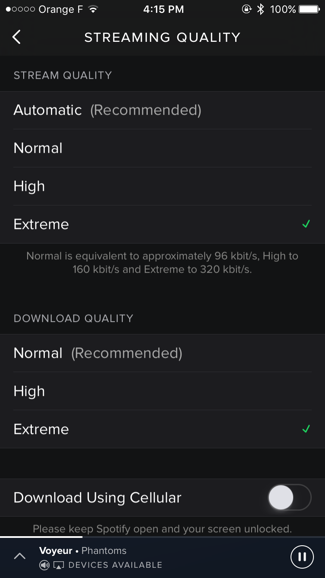If you’ve tried streaming Master of None from your tablet running on Verizon or AT&T, chances are it looked like a big pile of unwatchable pixels. It turns out Netflix is quietly capping videos on these networks so that you don’t burn through your entire data cap in just a few hours.
How bad do these videos look? Netflix is streaming videos at a resolution of 360p with a bitrate of 600kbps on AT&T and Verizon’s wireless networks (side note: Verizon owns AOL, and AOL owns TechCrunch). In other words, even on a normal smartphone with a 5-inch display you’re going to see that it looks bad.
Netflix is capping its own service because it doesn’t want you to exceed your data cap and pay for overage fees. Interestingly, Netflix doesn’t cap its videos on T-Mobile and Sprint because these two carriers are more permissive when you go over your data cap. And of course, T-Mobile lets you stream Netflix videos at 480p without counting against your data plan if you activate the Binge On option.
A good user experience involves finding the right balance between capping videos to consume less data and streaming high quality videos. But the thing is Netflix started capping videos five years ago. Smartphones, tablets, LTE networks and even data caps have changed quite a lot since then — and 360p doesn’t seem like enough.
“We believe restrictive data caps are bad for consumers and the Internet in general, creating a dilemma for those who increasingly rely on their mobile devices for entertainment, work and more,” Netflix wrote on its blog, confirming the WSJ’s original report. “So in an effort to protect our members from overage charges when they exceed mobile data caps, our default bitrate for viewing over mobile networks has been capped globally at 600 kilobits per second. It’s about striking a balance that ensures a good streaming experience while avoiding unplanned fines from mobile providers.”
It also makes AT&T and Verizon look bad. Many users must be thinking that these two networks are too slow and can’t handle streaming these videos in a decent quality. It’s also worth noting that Netflix caps videos on many other networks around the world, especially those with expensive overage fees.
According to the website’s settings, an hour of HD video represents 3GB, while an hour of SD video only represents 0.7GB. But instead of taking a decision for its users, the company should offer settings for those who want a better streaming experience. Spotify for example does a good job on this front:

But it looks like the company is going to move in this direction with an upcoming update in May. With better settings, the company shouldn’t make any distinction between carriers, period.
